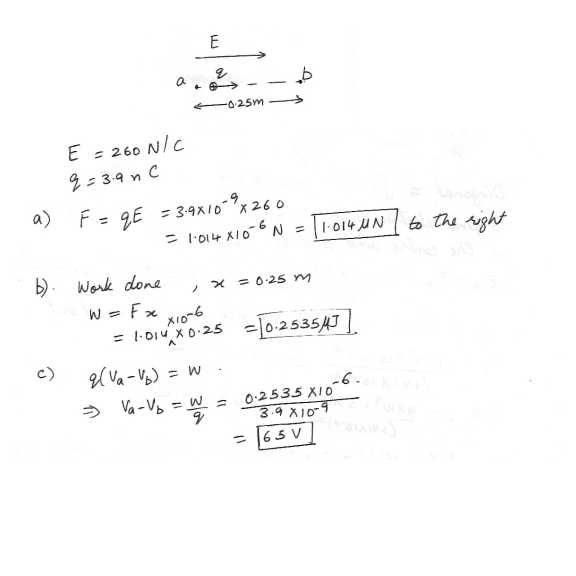Physics Electrostatics Level: High School
An object with a charge of 0.820 micro C is placed at the centre of the regular icosahedron with 20 equivalent surface .What is the electric flux through one surface of the icosahedron ?

Physics Electrostatics Level: High School
A horizontal beam of electrons initially moving at 4.2 x 10^7 m/s is deflected vertically by the vertical electric field between oppositely charged parallel plates as shown in the diagram . The magnitude of the field is 2.50 x 10^4 N/c .a) what is the direction of the field between the plates ?
b) What is the charge per unit area on the plates ?
c) What is the vertical deflection d of the electrons as they leaves the plates ?

Physics Electrostatics Level: High School
What are the magnitude and direction of the electric field midway between two point charges , -12 micro C and +13 micro C , that are 8.9 cm apart ?
Physics Electrostatics Level: High School
Positive point charges are placed at three corners of a rectangle , as shown in the figure at "click here" , in which d = 0.59 m . Take the +x-axis to point to the right .a) What is the electric field at the fourth corner ?
b) A small object with a charge of +9.9 micro C is placed at the fourth corner . What force acts on the object ?

Physics Electrostatics Level: High School
Two Styrofoam balls with the same mass m = 8.9 x 10^-8 kg and the same positive charge Q are suspended from the same point by insulating threads of length L = 0.98 m (figure is shown at click here"). The separation of the ball is d = 0.025 m. What is the charge Q ?
Physics Electrostatics Level: High School
A balloon , initially neutral, is rubbed with plastic until it acquires a net charge of 0.53 nC .a) Assume that only electrons are transferred, were electrons removed from the balloon or added to it ?
How many electrons were transferred ?
Physics Electrostatics Level: High School
Three point charges are fixed in place in the right triangle diagrammed (shown at "click here") in which q1 = 0.65 micro C and q2 = -0.51 micro C . What is the electric force on the +1.0 micro C charge due to the other two charges ?
Physics Electrostatics Level: High School
If a capacitor has a capacitance of 10.2 micro F and we wish to lower the potential difference across the plates by 20.0 V , how much charge will we have to remove ?
Physics Electrostatics Level: High School
An electron (charge -e ) is projected horizontally into the space between two oppositely charged parallel plates . The electric field between the plates is 900.0 N/C upward . If the vertical deflection of the electron as it leaves the plates has magnitude 5.0 mm , how much has its kinetic energy increased due to the electric field ?
Physics Electrostatics Level: High School
An electron is accelerated from rest through a potential difference delta V . If the electron reaches a speed of 7.80 x 10^6 m/s , what is the potential difference ?
Physics Electrostatics Level: High School
As per the figure shown at "click here" a uniform electric field has magnitude E = 260 N/C and is directed to the right. A particle with charge +3.9 nC moves along the straight line from a to b.a) What is the electric force that acts on the particle ?
b) What is the work done on the particle by the electric field ?
c) What is the potential difference Va - Vb between points a and b ?

Physics Electrostatics Level: High School
Find the potential at points a and b in the diagram as shown at "click here" for charges Q1 = +2.70 nC and Q2 = -2.70 nC.How much work must be done by an external agent to bring a point charge q from infinity to point b ?

Physics Electrostatics Level: High School
A square has sides of 2.0 cm with a charge of +15.0 micro C at one corner (a) and with charges of -5 micro C at the remaining three corners (b , c and d) .a) Find the electric field at the centre of the square
b) Find the potential at the centre of the square

Physics Electrostatics Level: High School
Sketch a graph of the electric potential between x = 0.00 and x = 5.00 mm for the parallel plate capacitor as shown in the figure at "click here"
Physics Electrostatics Level: High School
A proton is fired from far away toward the nucleus of a mercury atom . Mercury is element number 80 , and the diameter of the nucleus is 14.0 fm . If the proton is fired at a speed of 4.00 x 10^7 m/s , what is its closest approach to the surface of the nucleus ? Assume the nucleus remain at rest .
